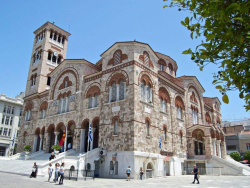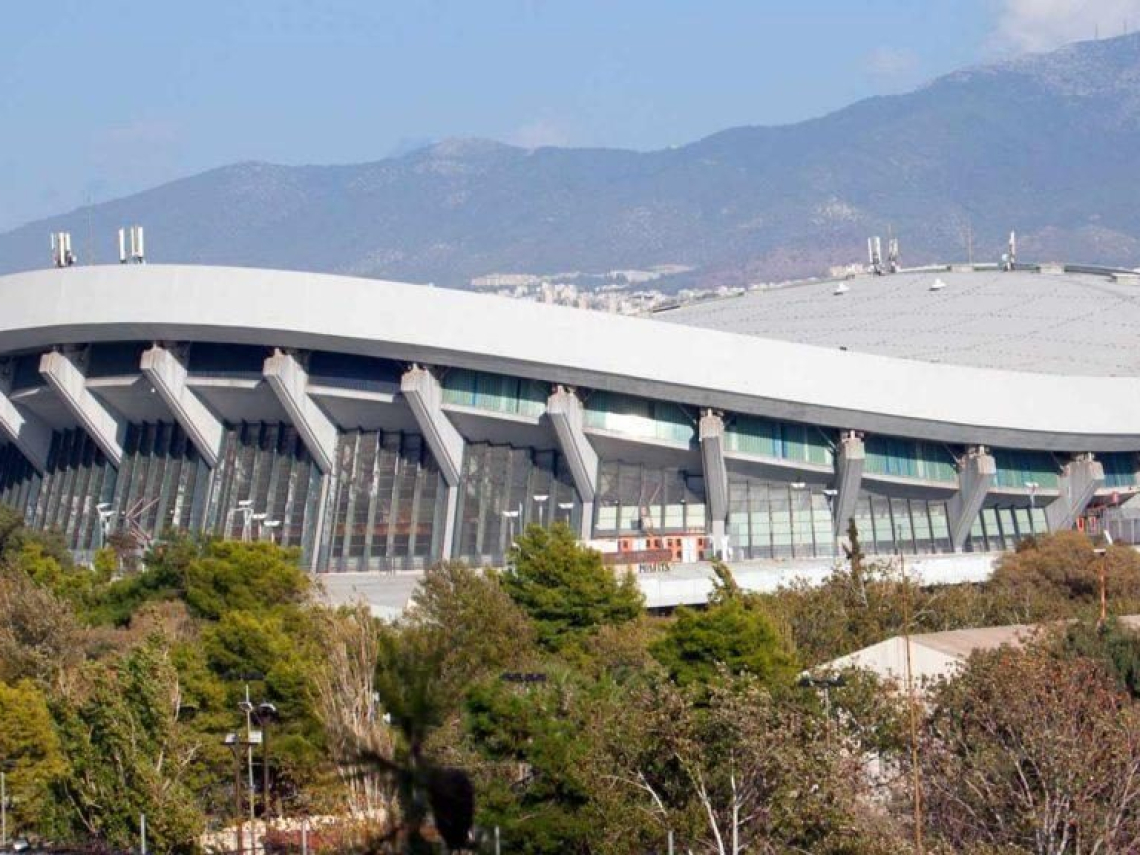Agia Triada Church

Agia Triada Church
This Church had a peculiar pattern, without any windows and 2 wooden bell towers built on the side. In 1845, it was decided to pave the church with tiles from Livorno. While in 1872, a bell tower was built on the facade of the church. On January 11, 1944, during the bombing of the city of Piraeus by the Allied airplanes, the Church of the Holy Trinity was destroyed. Thus burying under its ruins several citizens who had fled to there for protection.
In the summer of the same year on the grounds of the ruined Temple, a small temporary one was built to serve the parishioners and remained there for 12 years. After the destruction of the original Agia Triada, claims were made by the Municipal authorities, as well as obstacles set by the Archaeological Service. According to them, on the land existed the ancient trading center ("emborio"), the Commodity Exchange, and other ancient buildings.
In 1950, the Pan-Piraeiki Reconstruction Union of the Holy Metropolitan Church of Agia Triada Piraeus was founded, with the first President the late Miltiadis Puri. The purpose of the association was the restoration of the Temple and its present-day preservation. After many debates, a decision was made via the intervention of the Archbishop of Athens Spyridon and the Hellenic Minister of Public Works, Georgios Rallis. The erection of a church larger than the pre-existing one was to go forward and in the same position as before. The new Agia Triada was founded on Sunday, June 17th, 1956, in the presence of the Archbishop of Athens Dorotheou, the Hellenic Ministers of Education P. Leventis and Social Welfare Lina Tsaldari, and the Deputy Minister of Finance D. Aliprantis, local authorities and other officials.
During the excavations, however, numerous vases, gold coins, mosaics, inscriptions, and other artifacts were found that led the Archaeological Service to halt the diggings and erection of the Temple. At the same time, the Municipality reiterated their desire for the plot. After the persistent actions of both the late Archbishop Dorotheos and the unforgettable President of the Pan-Piraeiki Union, Miltiadis Puris, the claims of the Municipality and the arguments of the Archaeological Service were dismissed and the construction of the new cathedral continued. Notably keeping intact ancient building elements so that visitors can today admire the chapel of Saints Cyrillus and Methodius.
The inauguration of the New Church of the Holy Trinity of Piraeus took place on May 17th, 1964, and its construction was completed in 1979, based on the designs of George St. Nomikos. While the works of icon screening, "hagiography" (def. "biography of a Christian Saint"), etc.
This is a Byzantine-influenced building with a capacity of 3,100 people and a ground floor area of 835 square meters. Its dome has 40 windows and rests on 8 spherical triangles and 8 large arches. Thanks to these supports, but also its large diameter, the dome is visible from every point in the Temple, even from the entrances. Its external doors are of wrought-iron brass of a special technique. The ornate marble iconostasis is the work of Afon Doukas, while the wood-carved doors of the iconostasis are Theofilos Nomikos.
The hagiography of the temple began during the term of Mayor Aristides Skylitsis, to which the late industrialist Bodossakis contributed a considerable sum of money. This amount was spent by the Mayor for the purchase of gold leafs necessary for the holy painting of the Temple.
The first hagiographer of the church was the late Stefanos Almaliotis, after whose death was continued by the assistant and student of Anargyros Liakos, who followed his master's style. Mr. Almaliotis has been inspired by the Macedonian and the Cretan schools, resulting in a unique Byzantine portrayal of the mortal physique. The hagiographies have highly humanistic elements, with the consequence that the Agia Triada of Piraeus is not only a monument of Byzantine art but more importantly a place of prayer, insight, piety and divine absolution.








